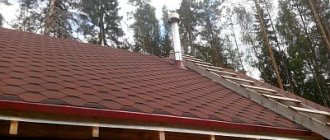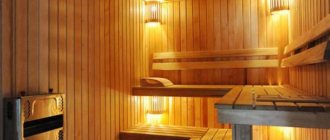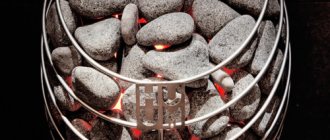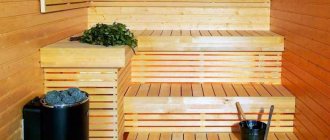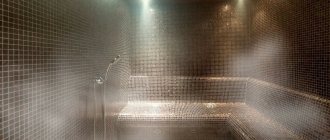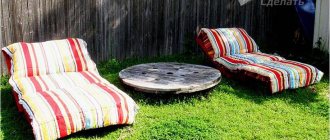100 ways to decorate a bathhouse interior - we will make the hammam stylish and safe. Baths are the most effective and ageless accumulator of health, vigor, and mood. Everything about them is important - from the layout to the set of accessories. Hamam Stroy LLC knows everything about their landscaping and features. An important component of any project is the interior decoration of the bathhouse. It is necessary to choose such materials and compositions that they do not violate hygiene standards, do not emit toxins, do not deteriorate from moisture, hot steam, and at the same time do not violate long-established national traditions. The company's portfolio includes hundreds of completed projects. Not a single one is repeated, each has a bright individuality and is made in strict accordance with technological laws. We offer services for interior finishing of floors, walls, ceilings in a Turkish bath (hamam). The choice of materials is agreed upon with the customer. We will offer our options, focusing on their design appeal, practicality and durability.
Interior decoration of a Turkish bath (hamam)
The choice of materials and technologies for the interior decoration of a Turkish bath is subject to one rule - to create a comfortable indoor climate. It shouldn’t be as hot here as in a Russian steam room or Finnish sauna. The desired effect in eastern hammams is achieved by maintaining a very humid microclimate. Experts recommend keeping the temperature within 30-55 degrees, and this is an ideal atmosphere for people who cannot tolerate extreme heat. The interior decoration of baths includes a set of sequential measures: • Laying thermal insulation; • Installation of a heating system; • Laying finishing plaster and waterproofing; • Finishing of surfaces – floors, walls, ceilings, sunbeds. The price of interior finishing can vary widely. At the pre-design stage it is impossible to name it. An approximate estimate will be drawn up after inspecting the premises, preliminary selection of materials and taking measurements. What the client should know: • You can create a beautiful oriental bathhouse in a separate building, in a private house and even in an apartment; • The epicenter of the hammam is the steam generator, the rest is technology to create comfort and aesthetics; • The decoration in the bathhouse can be different - both in color and composition; • Mandatory steps – creation of ventilation, sewerage, waterproofing.
Advantages and disadvantages
One of the main advantages of a Turkish bath is the gentle effect of heat. The pores of the body open slowly and are gradually saturated with moisture. Blood circulation improves, the body’s self-purification processes are activated: the removal of waste and toxins begins. This effect is achieved by a special room arrangement. Despite the high level of air humidity, reaching 100%, the hot steam here is surprisingly easy to transfer.
Arrangement of a Turkish bath and finishing with natural materials is possible in a modern style
There are several disadvantages:
- high energy intensity: on average, the hammam warms up within 3–4 hours;
- the complexity of the work on arranging the premises.
- high price of finishing materials and necessary equipment;
- significant weight load on the foundation and floors.
Thermal insulation of hamam
The walls of the bathhouse are a multi-layered cake. The first layer is to apply additional waterproofing. Installing thermal insulation will be the next step. There are two ways to do it - both are based on the use of different materials: • Laying special insulation. Fastening is done using an adhesive base. Installation is carried out on all surfaces. A metal frame is attached around the perimeter. It is covered with a plaster mesh. This method is considered traditional, but requires a lot of time to complete the work; • Installation of lightweight foam panels. The second option of thermal insulation is used more often. The panels have a whole range of technological properties and simultaneously serve as hydro-, sound- and thermal insulation for the bath. The material heats up quickly, does not create a powerful load on the ceiling, and serves as a reliable barrier to the penetration of cold masses and moisture. Thermal insulation with light panels is the most appropriate finishing method, because: • They are easy to install - the work is carried out without liquid mixtures and wet processes, there is no dirt on the site, there is no need to waste time cleaning up construction waste; • Panels replace screed and plastering, thereby saving money on the purchase of additional materials; • The finish does not emit toxins when heated and can be used for finishing residential premises. They are assigned a low flammability class. They do not absorb or generate moisture inside, which means they cannot serve as a favorable environment for the proliferation of microorganisms and fungi.
What is a hammam and where did this phenomenon come into our lives?
The origin of this bath is not Turkish, but ancient Roman - from the Roman thermal baths. Steam from boiling water outside the room was supplied to holes in the walls, and the stove heated the underground floor on poles. But in Turkey, baths became truly widespread because the Prophet Mohammed declared that the cleanliness of a Muslim’s body is half of his faith, and declared regular visits to the hammam obligatory. The first Russian hammam was incredibly luxuriously built in Tsarskoe Selo according to the design of Ippolit Monighetti.
Sketch by architect Ippolit Monighetti “Turkish Bath”
In Europe, hammams originated in the 19th century and were considered a panacea even for asthma and cholera. They are traditionally spacious and luxurious; marble and mosaics are used for decoration. They have certain architectural principles, in particular - a domed vault, so that water does not collect in the corners and does not drip on vacationers.
Hammam dome in mosaic
Heating systems
The issue of heating a bathhouse is one of the most pressing. This is its functional essence, which means it is very important to follow technological standards. In a Turkish bath, all surfaces are heated - floors, walls, sunbeds. There is no need to heat the ceiling dome, since all the heat already rises. Usually the system is distributed around the entire perimeter in such a way that it can be used to maintain a stable temperature of at least 300C. To achieve the desired effect, it is enough to place the pipes to a height of approximately 60 cm from the seats. Water or electricity is used as a coolant: • Water heating is the most common option when hot water circulates through internal pipes. This type is often used in the design of private houses, and it is also most suitable for interior decoration of baths. Water heating is more profitable in terms of current costs, but the method can only be used in buildings connected to a general heating system; • Electrical heating - works in much the same way as water heating, but instead of pipes it uses an electric cable. The method is reliable, practical, and also the only one possible in places where it is not possible to connect to the network heating system. Power is supplied from a conventional 220V source. The only negative is the high price of energy.
Steam generator
Steam generator for a Turkish bath
Hard water is the cause of scale. As a result, the equipment fails before the specified operational period. To avoid damage to the steam generator, it is necessary to purify the water from alkali metals - calcium and sodium. Let's figure out how filtering and selection of the necessary equipment is carried out:
- The water that will be used in the hammam is sent to the laboratory for analysis. You take the resulting calculation of chemical elements and give it to an organization specializing in the preparation of water systems. Based on the results obtained, experts select a suitable filter. This way you can significantly soften the carrier and get rid of troubles.
- The power of the steam generator is determined in accordance with the area of the serviced premises. It is noteworthy that different manufacturers offer equipment with different performance for the same quadrature. To make the best choice, you need to either consult with specialists or study the technical documentation of the unit.
- The steam generator, as mentioned above, is located in an auxiliary room and installed at a height approximately equal to chest level or directly on the floor. This arrangement allows for the most convenient servicing of the steam generating unit. You will be required to periodically replace heating elements. These parts are consumables that must be replaced, regardless of the brand and brand of equipment. A temperature sensor installed in the steam room at a height of 190 cm from the floor is connected to the steam generator. For convenience, a steam button is installed next to the lounger. The steam line is a copper pipeline with a diameter of 1/2 or 3/4 (depending on the power of the equipment). The correct wire cross-section will help determine the technical data sheet. The laying of the steam line should ideally be in a straight line. In practice, this practically never happens, so try to avoid a large number of bends and keep them to a minimum. Correct alignment is very important. If it works properly, condensate will not splash out of the nozzle, burning the feet of visitors. To avoid large heat loss, the steam line must be insulated and have a length of no more than 500 cm. A locking mechanism must be attached to the drain from the steam generator to prevent wastewater odors from penetrating inside the steam room. Each steam generator goes on sale along with technical documentation, which contains all the necessary information for the most effective use of a particular model.
- The control panel can be made both inside the bathhouse and in the utility room. Experts are inclined to the latter option. How to select and install a steam generator.
Waterproofing
Waterproofing the walls will save the inner layers from moisture and rapid failure. This stage is given a lot of attention when decorating walls in ordinary houses and apartments, not to mention establishments where high humidity is always maintained. For waterproofing inside Turkish baths, the following are used: • Universal panels in the form of stable specialized slabs, covered on both sides with a waterproofing layer; • Two-component mixtures, for example, Italian MAPEI, LITOKOL, which are used for waterproofing swimming pools; • Membrane materials – are absolutely waterproof sealing compounds applied to a reinforced mesh (included in the kit). This layer performs the function of finishing waterproofing. Decorative mosaics or other facing materials are not laid on it.
What should not be used to decorate a steam room?
The interior of the bath imposes restrictions on the following materials:
- paper tapes
- vinyl wallpapers;
— non-woven products.
Decorating with fiberglass wallpaper will also not bring the desired result. When a steam room is made, the finish must be moisture resistant. Some offer paper options and insulation along with them. However, this finishing of the steam room in the bathhouse is not durable.
Decoration of walls, floors, sun loungers
Historically, the interior decoration of oriental-type baths is done with multi-colored marble, ceramics, and glass mosaics. With their help, decorators create original plots, use unusual forms, adhering to oriental themes. Some sketches in the form of chic panels are given a high artistic meaning. With all the wealth of choice of modern materials, you can design hundreds of design options for a Turkish bath, each time using a different approach. It is allowed to carry out stylized finishing, decorate the kurna and other comfort zones to your taste, but it is better to decorate the sun loungers with marble. The choice is dictated by its technological properties - the material heats up quickly, but cools down slowly, retaining heat for a long time. The following finishing options are suitable for a bath: • Mosaic: there are no contraindications for the use of marble, glass varieties of mosaic, as well as smalt finishing. The optimal solution for creating bright oriental patterns on all surfaces, including floors and ceilings; • Marble: its presence in a Turkish bath is a tribute to tradition. The interior decoration of the baths was originally made with natural stone. Marble surfaces look tolerant and very rich. We have already talked about their technological advantages, which manifest themselves in the form of fast heating and the ability to retain heat for a long time. By maintaining an optimal temperature, they prevent severe overheating of surfaces, thereby eliminating burns. Marble is suitable for finishing sunbeds, slabs are made from it, and mosaics are made from it; • Smalt: is an alloy of glass and semi-precious mineral compounds. It is used to make panels that look impressive and do not succumb to the destructive influence of time. It is absolutely hydrophobic and insensitive to high temperatures and moisture. Can be restored; • Ceramic tiles: practical, technologically advanced and inexpensive material for floor finishing. More often, varieties with a corrugated structure are used, paying attention to their anti-slip surface. Laying plain ceramics is allowed. You can make the floors an independent element of decor, paint them in oriental style. Ceramic mosaics are more suitable for laying on walls; • Flexible stone: the raw material for production is marble chips. Special acrylic-based binding components are added to the mass. Advantages - strength, beauty, moisture resistance, ductility. Flexible finishing is very important for the formation of rounded silhouettes of the domed vaults of the bathhouse.
Health effect
The basis for the beneficial effects of a Turkish bath is the simultaneous combination of two factors:
- Gentle warming effect of the warm and very humid atmosphere of the bathhouse. A person sweats intensely, but without the risk of overheating the body;
- A constant flow of fresh air ensures good health and compensates for the energy spent on warming up the body.
In addition, there are massages, relaxation and aromatherapy. In fact, the Turkish hammam is a form of relaxation; in traditional cultural practices, a visit to the bathhouse can take up to 7-8 hours. Few admirers of the sauna or Russian bathhouse are able to sit in the steam room for at least half of this period.
Strength is restored very quickly, without traumatic high temperatures and contrasts, which is why the construction of Turkish baths has long become a mass phenomenon and a fashion trend. Hamams are built in a simplified form in apartments and even on the second floors of dachas and country houses.
Public and home version of hammam
Ceiling, floor in hammam
The ceiling for a bath in an oriental style is one of the key features of a Turkish hammam. It is designed differently from the way ceiling surfaces are designed in a Russian bath or Finnish sauna. A mandatory requirement is that the ceiling must be shaped in such a way that drops of moisture do not hang from the surface, but immediately flow down without falling out as condensation. That is, a standard straight ceiling is not suitable here. Instead of a flat surface, it is given any streamlined shape, be it a dome, vaults, arches or other curved silhouettes. Having completed the waterproofing finish, proceed to the finishing cladding with decorative materials. It can be any type of mosaic. To give greater aesthetic expressiveness, original lighting is used on the ceilings, for example, in the form of a starry sky. How to finish a bathhouse, given its 100% humidity? There is a unique solution for floor design. Surface heating is realized through a “warm floor” system, which, like all heat supply, can be water or electric. The second point is to ensure unimpeded drainage of accumulated water. For this purpose, a drainage ladder is constructed in the hammam. It is advisable to install a dry seal to prevent the formation of a persistent sewage odor in the premises. The floors are laid at a slight slope (no more than 2%), which goes towards the ladder. Ceramics or mosaics are used for floor cladding.
Device Features
The main principle of the hammam is to ensure uniform heating of each element. This effect is achieved in one of two ways:
- electric heating;
- water heating through piping configurations.
Soft steam is provided by the operation of a steam generator. In the past, this task was performed by a large cauldron filled with water and constantly heated.
In a classic hammam, a steam generator is not installed; the required air humidity is achieved through the evaporation of water from heated surfaces.
In a Turkish steam room, marble is traditionally used to make sun loungers. But it can be completely replaced with ceramic mosaic, which reduces the cost of construction costs. The tiles are laid on special thermal and moisture insulating panels made from polyurethane foam. The seat and/or back (depending on the model) have recesses for laying water heating pipes. The sun loungers are made of brick lined with marble.
Several interior items are intended for relaxation and wellness treatments in the hammam:
- massage tables;
- seats;
- sun loungers.
More information about massage in the bathhouse can be found here: /banshikam/massazh-v-bane.html
Modern models of the listed products have the ability to adjust the height, slope angle, and planting depth. Can be free-standing or wall-mounted. One of the features of interior items is rounded corners.
Hamam design features: rounded shapes and corners, domed ceiling, soft lighting
The floor and walls in the hammam are always warm, which is achieved using the same methods: electric or water heating. The ceiling must have a dome-shaped shape, which ensures condensation flows down the walls of the vault and eliminates the formation of drops. The optimal room height is 2.6 m.
To ensure air exchange, natural or forced ventilation is used.
More information about forced ventilation in the bathhouse can be read here: /ventilyaciya/prinuditelnaya-ventilyaciya-v-bane.html
If a hammam is installed in a house or apartment, the air ducts are connected to a separate exhaust duct that removes exhaust air outside the building.
This approach eliminates the penetration of steam and odors into living and service rooms.
Accessories
It is unthinkable to imagine a Turkish bath without seats and sun loungers of various shapes. There is also a heated massage table - chebek (gebek). One of the main elements is considered to be a kurna - a special container without drainage, intended for rinsing. It is installed in the steam room, highlighting a separate zone. The finishing of the qurna is done by a professional. Ornaments and images are applied to it using multi-colored mosaics. Water from hot/cold water taps flows into the kurna, then overflows and is discharged to a drain connected to the sewer. A half-qurna is used to scoop up water and perform ablutions. Traditional hamam items are a jug illuminated by LED lamps and pillows with fragrances made of moisture-resistant fabric. They are filled with incense, which releases a wonderful, soothing scent when exposed to high heat.
Hamam bath ceremony
The Turkish bath consists of three halls. The first room, the Jamekian, serves as a locker room. In the dressing room, the body is preheated and prepared for further procedures; the air temperature here is maintained at 30 - 35 degrees Celsius.
The next step in the bath ceremony is the “hararet” steam room. Steam is thrown into the hammam's steam room at a temperature of approximately 45 degrees. The saturation of the air with steam is such that nothing is visible at a distance of more than one meter.
The steam room provides procedures for cleansing and renewing the skin: peeling and soap massage.
The procedures alternate with water washes. For a more pronounced effect, steam is saturated with essential oils.
The shape of the hammam bathhouse is similar to a hand: a round platform with a massage table in the center, a chebek-tashi, resembles a palm, and paired niches resemble fingers. Each bath niche creates high humidity and different temperatures - from 70 to 100 degrees.
Lastly, they go to the rest room, “soguklyuk,” where you can lie down, relax, and drink tea.
Hamam lighting
Electrical installation work is carried out in strict compliance with the main rule - all wires, cables, devices, switches must be reliably protected from moisture and exhibit high heat resistance. Beautiful lighting is one of the mandatory elements of a bathhouse, but in addition to aesthetics, it must have electrical safety. To achieve this, use sealed lamps with a voltage of no more than 24V, with a protection level of at least IP65. The same devices are used to set the lights in swimming pools. The wide possibilities of LEDs can be used to implement original spatial ideas. Important! The finishing materials of the bathhouse, the methods of laying them, the choice of kurna, the place to install the massage table, the location of the lamps - these and other points do not tolerate modifications. All structural details and technologies are laid down at the stage of creating a design project. A specialist will do this best, and your bathhouse will be the most desirable place in the house.
Construction of the hammam
It is worth noting that hammams built in our time are different from those that existed in the old days. Previously, baths were a public place, but now there is a tendency to create your own small steam rooms. The rules and nuances of construction were created by the founders of Turkish baths, so there is no need to reinvent the wheel, you just need to go back to the roots.
Installation of a heating system in a hammam
It is best, of course, to use the services of professional builders, but if the means do not allow this, you can arm yourself with theoretical knowledge and try to build a Turkish hammam with your own hands.


